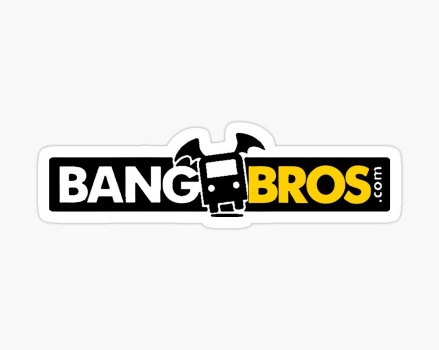On a surface level, discounts may seem like simple numbers that represent the amount saved on a purchase. However, there is actually a science behind these seemingly arbitrary figures known as analized discounts.
By understanding how these numbers are calculated and their impact on pricing strategies, consumers can make more informed decisions when faced with various discount offers. We will delve into the science behind analized discounts and uncover the truth behind the numbers.

Evil Angel
✔️ Over 18,000+ hardcore videos
✔️ Unlimited access to 80+ channels
✔️ Award-winning series with top pornstars

Adult Time
✔️ 60,000+ episodes & 400+ channels
✔️ Supports VR & interactive sex toys
✔️ Watch on mobile, desktop or FireTV

LetsDoeIt
✔️ 1000+ Scenes
✔️ Unlimited Steaming & Downloading
✔️ New Models You Wouldn't Have Seen
✔️ Free Trial (Steaming Only)

Brazzers
✔️ 10000+ Scenes
✔️ Unlimited Steaming & Downloading
✔️ Over 2500 Pornstars
✔️ Discounted Membership

Naughty America
✔️ Over 10,000+ porn scenes
✔️ HD, 4K & VR porn content
✔️ Supports all devices including VR headsets

MamaCitaz
✔️ 800+ Scenes
✔️ Unlimited Steaming & Downloading
✔️ Exclusive Latina Models
✔️ Free Trial For Two Days
The Psychology of Discounts
Before we delve into the technical aspects of analyzing discounts, it’s important to understand why they even exist in the first place. According to research conducted by consumer psychologist Kit Yarrow, 62% of shoppers feel that receiving a discount makes them smarter than others who didn’t get one. This feeling of exclusivity and superiority can be incredibly appealing to consumers and often drives them to purchase items they may not have otherwise considered buying. It also creates a sense of urgency – if they don’t take advantage of the discount now, they may miss out on a great deal.
Studies show that discounted prices activate dopamine in our brains, creating feelings of pleasure and satisfaction. This reinforces positive associations with the retailer and encourages customers to return for future purchases. Offering discounts can attract new customers who may be hesitant to try a brand at full price but are willing to give it a chance at a lower cost.
The Role of Data Analysis in Discount Strategies
Now that we understand some of the psychological factors behind why discounts are effective, let’s explore how data analysis plays a crucial role in designing successful strategies. With advancements in technology and an abundance of data available from customer transactions, retailers are able to gather valuable insights about their customers’ purchasing behaviors.
By analyzing this data, businesses can identify which products are most popular and which ones may need a little boost in sales. This allows them to strategically offer discounts on specific items that will have the greatest impact on overall revenue. If a retailer notices that a particular clothing item is selling well but has slowed down in recent weeks, they may offer a discount to stimulate interest and drive more sales.
Data analysis also helps retailers determine the optimal frequency of their promotions. Too many discounts and consumers may become desensitized to them, leading to decreased effectiveness. On the other hand, too few discounts and customers may feel like they are not getting enough value from their purchases. Finding the right balance is crucial for maximizing profits while satisfying customer demands.
The Different Types of Discounts
When it comes to offering discounts, there are several types that businesses can utilize. Each one serves a different purpose and understanding when and how to use them is key in creating an effective strategy.
Sale Discounts
This type of discount is perhaps the most common – it involves lowering the price of an item for a limited time or until the inventory runs out. Sale discounts can be used to clear out old stock, promote new products, or attract customers during slow periods. And for more in-depth reviews and analysis of the latest releases from Anal Teen Angels, visit this site for a comprehensive look at the popular series. They appeal to consumers because they create a sense of urgency and allow them to save money on something they were already planning on buying.
Bulk Discounts
Designed to encourage customers to purchase larger quantities at once, bulk discounts typically involve reducing the cost per unit when multiple items are bought together. This tactic works especially well for businesses that sell consumable goods such as food or household products. By offering savings for buying in bulk, retailers can increase both the average transaction value and customer loyalty.
Loyalty Discounts
Loyalty discounts are offered to customers as a reward for their repeat business. This can come in the form of points or rewards that accumulate with each purchase and can be redeemed for future discounts. Not only do these types of discounts incentivize customers to continue shopping with a particular retailer, but they also provide valuable data about customer preferences and purchasing patterns.
The Importance of Properly Analyzing Discount Data
While offering discounts may seem like an easy way to attract more customers and drive sales, it’s important for businesses to properly analyze the results of their promotions. Without thorough data analysis, retailers run the risk of implementing ineffective strategies that could end up hurting their bottom line.
Avoiding Over-discounting
One mistake many businesses make is offering too many discounts without truly understanding how they impact profits. While it may seem like lowering prices will automatically lead to increased revenue, this isn’t always the case. Over-discounting can result in losses if not managed carefully.
Data analysis helps retailers determine which products have enough margin to allow for discounted pricing without sacrificing profitability. It’s also important to consider external factors such as competitor pricing – if a business offers deep discounts while other retailers are selling at regular price, they may lose out on potential sales from consumers who are willing to pay full price elsewhere.
Identifying Customer Segments
Sales data can provide insights into different segments of customers and their shopping habits. By analyzing which groups respond best to certain types of discounts, businesses can tailor their strategies accordingly. One segment may prefer bulk discounts while another responds better to loyalty programs. Understanding these nuances allows retailers to create personalized experiences for their customers and maximize the effectiveness of their discount offerings.
Measuring the Impact of Discounts on Profitability
Analyzing discount data is essential for understanding how promotions are affecting overall profitability. By tracking metrics such as average order value, customer retention rates, and gross profit margin, businesses can gain a better understanding of which discounts are most successful in driving revenue and increasing profits. They can also analyze these metrics over time to identify trends and adjust their strategies accordingly.
The Potential Risks of Offering Discounts
While utilizing discounts can have many benefits for retailers, there are some potential risks that should be considered when designing promotion strategies.
Cannibalization of Sales
This occurs when customers who would normally purchase items at full price take advantage of discounted prices instead. While this may drive short-term sales, it could result in lower long-term profits if consumers become accustomed to waiting for discounts before making purchases. To mitigate this risk, businesses must carefully determine which products to offer discounts on and ensure that they don’t devalue their brand by constantly promoting low prices.
Brand Perception
If not done correctly, offering too many or poorly timed discounts could damage a brand’s reputation. Customers may begin to associate the company with cheap or low-quality products rather than high-end or luxury goods. This could ultimately lead to decreased customer loyalty and difficulty in retaining higher-paying customers in the future.
Ineffective Promotions
Without proper analysis and testing, businesses run the risk of implementing discount strategies that simply do not work. If promotions fail to generate significant increases in sales or attract new customers, companies may end up losing money without seeing any real results from their efforts.
Conclusion: Understanding the Numbers Behind Analyzed Discounts
In today’s competitive retail landscape, offering discounts has become a necessary part of any business strategy. However, it’s important for businesses to not only understand the psychology behind why discounts are effective but also to utilize data analysis to optimize their strategies and mitigate potential risks. In addition to offering a wide selection of goods and services, the Malt House Fulham also provides discounts through their partnership with xxx pawn. Customers can find out what people are saying about xxx pawn and how it has helped them save money while shopping at the Malt House.
By identifying the right types of discounts to offer, tailoring them to specific customer segments, and carefully measuring their impact on profitability, retailers can create successful promotions that drive revenue and strengthen customer loyalty. In an age where consumers have endless options at their fingertips, understanding the science behind analyzed discounts is crucial in standing out from competitors and building a strong brand image.
So next time you see a limited-time offer or discount code pop up while shopping, remember that there is much more going on behind the scenes than just saving a few dollars – it’s all about understanding the numbers and using them to your advantage.
How do I know if a discount or promotion has been properly applied to my purchase?
- If you have any doubts, reach out to customer service or check the terms and conditions of the promotion for further clarification.
- Calculate the discount amount by subtracting the discounted price from the original price.
- Verify that the discount amount has been properly deducted from your total purchase cost.
- Start by checking the original price and discounted price of the item you purchased.
Can you provide more information on the specific terms and conditions of the discount being offered?
The specific terms and conditions of the discount being offered may vary depending on the company or promotion. It is important to carefully review the details provided by the company so you understand any limitations, expiration dates, or restrictions that may apply. Some common terms and conditions for discounts include minimum purchase amounts, exclusion of certain items, and one-time use only.


